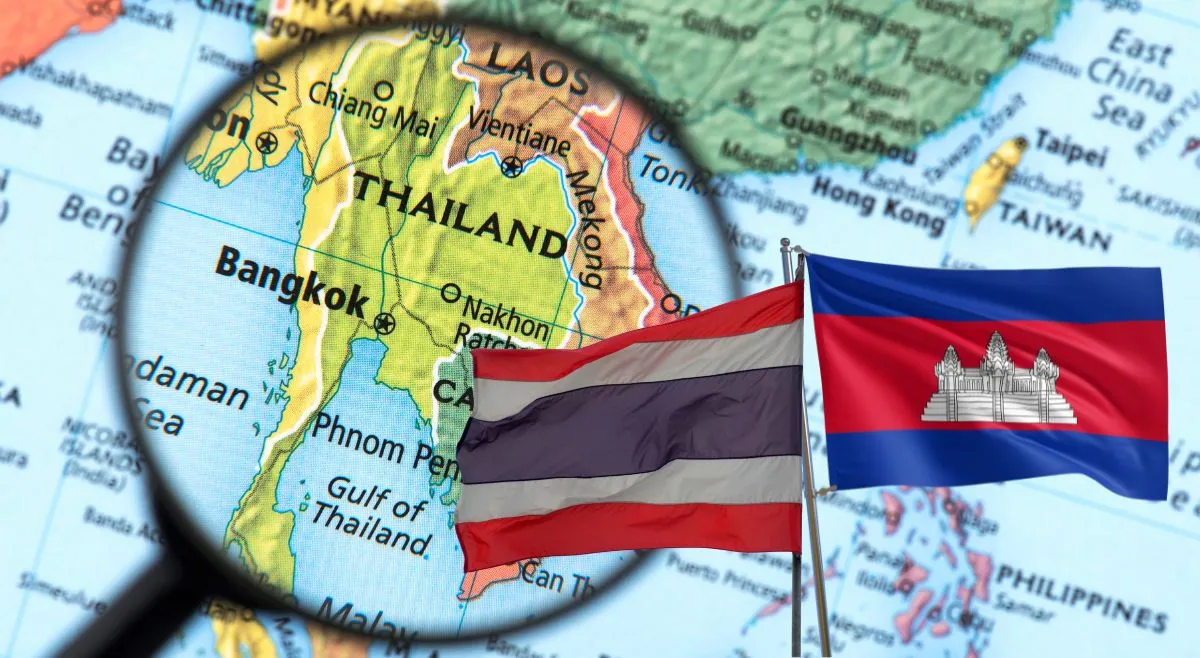- By Vivek Katju
- Wed, 30 Jul 2025 10:21 PM (IST)
- Source:JND
Thailand and Cambodia reached a ceasefire on July 28, mediated by the United States and Malaysia to end armed hostilities that were taking place between them. Talks for the ceasefire were held in Malaysia which currently heads the Association of South East Asian Nations (ASEAN). They were presided over by Malaysian Prime Minister Anwar Ibrahim and the US and Chinese ambassadors were present during discussions between Thailand’s Acting Prime Minister Phumtham Wechayachai and Cambodian Prime Minister Hun Manet, son of Cambodia’s strongman Hun Sen. Earlier, US President Donald Trump had spoken to both leaders and pressured them to cease fighting.
While there have been occasional tensions between Thailand and Cambodia because of a bilateral border dispute related to the location of a Hindu temple called Preah Vihear, the extent of the fighting over the few days prior to the ceasefire took the region and the wider world by surprise. Bilateral tensions were building up since the past few months between the two countries over a number of issues but the one which attracted public attention was their old differences on the area where Preah Vihear is located. The militaries of the two countries also got involved and strongly fought against each other, especially a few days prior to the ceasefire. There were military and civilian casualties on both sides and many people had to leave the border area where the fighting was occurring.
The Thailand-Cambodian issues which have not got attention relate to a breakdown in relations between Hun Sen and Thailand’s real power wielder Thaksin Shinawatra. The two countries are also involved in a dispute over a maritime area rich in hydrocarbons. Bilateral differences do not originate from any religious factors. The overwhelming majority of Thais and Cambodians are Theravada Buddhists. A brief background of the border dispute and a peep into history would therefore help to clarify the situation.
Thailand has always remained an independent kingdom but its neighbour, Cambodia, came under French rule as did Vietnam and Laos. In 1907, France, as the colonial power ruling Cambodia, and Thailand (then known as Siam) entered into a border agreement. Cambodia became independent in 1953 and a dispute emerged with Thailand about the location of Preah Vihear. Cambodia took the matter to the International Court of Justice in 1959. It ruled in 1962 that Preah Vihear was part of Cambodia. While at that time Thailand grudgingly agreed with the Court’s ruling and removed its troops from the area, it felt that it had been cheated from what was rightfully its part.
The Preah Vihear matter came up once more in the consciousness of the Thai people in 2008 when Cambodia approached UNESCO to declare the temple as a World Heritage Site. It is important to note that Cambodia was suffused with Hinduism during Khmer rule which reached its height during the 11th to the 13th centuries. This period witnessed the construction of magnificent Hindu temples, especially in the Siem Reap area, but also in other parts of Cambodia. Preah Vihar is part of the Hindu period of the area. One of the greatest temples in the world, Angkor Wat, which was dedicated to Vishnu was constructed in the Siem Reap area in the middle of the 12th century. However, later Theravada Buddhism began to influence Cambodia and from the end of the 12th century onwards Angkor Wat began to be converted into a Buddhist place of worship but without destroying what had been constructed. At the top of the temple, statues of Buddha were placed indicating its changed nature. It was from this time onwards that the region which now comprises Cambodia, Laos, Thailand and later Myanmar came under the influence of Theravada Buddhism. And, it has remained so till now.
Theravada Buddhism relies on the noble teachings of Gautam Buddha for a person to break the cycle of birth and rebirth and attain Nirvana. During my posting as India’s ambassador to Thailand, I noticed that while the Thai Buddhists placed the Buddha at the highest spiritual level, they worshiped Hindu gods for assistance in their present lives. Indeed, the Thai royal firmly follows Theravada Buddhism but also pays respects to Hindu priests, some of whom are attached to the Palace. Thus, the King or a senior member of the royal family publicly presides over the annual sowing festival where the priests bless the seeds. Hindu epics, especially the Ramayana in its Thai version, is part of the culture of the country.
Hun Sen enjoyed excellent ties with Thaksin and helped him during his 15 years in exile but relations soured after Thaksin returned to Thailand and became politically powerful. Indeed, Thaksin’s 36-year-old daughter Paetongtarn who became Prime Minister in August 2024 tried to mend fences with Hun Sen. In a private telephonic conversation, she called him ‘Uncle’ and said that the troubles were being caused by the ‘other side’ and she will rein in the military. Hun Sen released the conversation on social media compelling the Thai Constitutional Court to suspend her from her position on July 1.
Nationalistic sentiments have come to the forefront in both countries but the situation has calmed down. However, that does not mean the Preah Vihear controversy will go away.
(Note: The author is a former Indian Ambassador to Thailand. Views are personal.)
